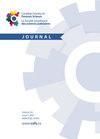Les paramètres clés de l'interprétation des fibres textiles en sciences criminelles. Partie I: Occurrence et bruit de fond
IF 0.2
Q4 MEDICINE, LEGAL
Canadian Society of Forensic Science Journal
Pub Date : 2018-01-02
DOI:10.1080/00085030.2017.1379683
引用次数: 9
Abstract
ABSTRACT The question at the centre of forensic expertise is the determination of the probative value of a correspondence between recovered trace evidence and suspect material. In the field of textile fibers, it is necessary to decide on the meaning of non-differentiation between a textile in question and a reference group (of control) fibres from a putative source. To do this, it is possible to use a probabilistic approach, in particular a Bayesian approach, in order to assign a likelihood ratio to the observations resulting from laboratory examinations. Several parameters have to be considered: the rarity of the observed fibres (occurrence), the probability that the latter will come from the criminal action (transfer and persistence) and the probability that they are present by chance (not related to the criminal activity). The present article is a critical review of the sources of information published in the forensic literature that can be used to estimate the parameters for the calculation of the likelihood ratio. The main results are presented and are discussed in the light of the advantages and limitations of different types of studies. In this first part, only the studies dedicated to the determination of the scarcity of the index fibres (occurrence) and the ‘background’ fibres will be presented. Work on the transfer, persistence and recovery of fibres will be dealt with in Part Two.刑事科学中解释纺织纤维的关键参数。第一部分:发生和背景噪音
摘要:法医学专业知识的核心问题是确定已找到的痕迹证据和可疑材料之间的对应关系的证明价值。在纺织纤维领域,有必要确定所讨论的纺织品和来自假定来源的参考组(对照组)纤维之间不区分的含义。为了做到这一点,可以使用概率方法,特别是贝叶斯方法,以便为实验室检查产生的观察结果分配似然比。必须考虑几个参数:观察到的纤维的稀有性(发生)、后者来自犯罪行为的概率(转移和持续)以及它们偶然出现的概率(与犯罪活动无关)。本文对法医学文献中发表的可用于估计似然比计算参数的信息来源进行了批判性回顾。根据不同类型研究的优点和局限性,介绍并讨论了主要结果。在第一部分中,仅介绍专门用于确定指标纤维(发生)和“背景”纤维稀缺性的研究。纤维的转移、持久性和回收工作将在第二部分中讨论。
本文章由计算机程序翻译,如有差异,请以英文原文为准。
求助全文
约1分钟内获得全文
求助全文

 求助内容:
求助内容: 应助结果提醒方式:
应助结果提醒方式:


